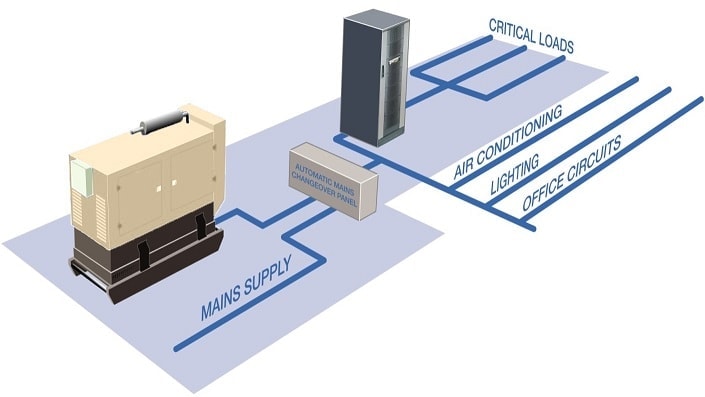Advanced UPS technologies are helping to ease pressure, save money and help organisations meet their environmental responsibilities explains Mike Elms, UK Sales Manager for KOHLER Uninterruptible Power.
UPS systems have long played a vital role in business critical IT power protection, with many data centres still running systems 20 years after installation. But demand has been increasing exponentially while energy and carbon emission costs have been escalating. This is motivating data centre operators to adopt innovative UPS technology where legacy systems are no longer sufficient.
Continued rapid growth in online business transaction processing creates a power demand which is not only much greater but increasingly critical as well. Many organisations’ continued existence depends on the uninterrupted availability of their online transaction processing resource. Meanwhile, the pressure to mitigate this rising demand for critical power isn’t due to spiralling energy costs alone; the Carbon Reduction Commitment (CRC) is the latest in a series of international and Government measures intended to cut energy consumption and carbon emissions. Qualifying organisations who fail to reduce will be penalised financially and by reputation. Their energy costs will rise and their position in a league table will be publically visible.
Innovative UPS architecture is allowing data centres to address these issues. Earlier UPSs were bulky, transformer-based monolithic floor-standing units that lacked flexibility in adapting to current or projected critical loads. By contrast, a UPS configuration can now comprise a set of small, rack-mounting modules that can be incremented or ‘right sized’ to accurately match the current data centre load.
By right sizing, the UPS modules run at near full load, increasing their operational efficiency. This cuts costs and carbon emission directly through reduced energy consumption and indirectly through a reduced cooling load. Further financial and floorspace savings arise because overcapacity for future expansion becomes unnecessary – additional modules can be added when required. With modular growth flexibly tracking that of its critical load, UPS loading and efficiency can be maintained.
The trend towards leading power factor blade servers within data centres highlights another efficiency advantage of transformerless modular UPSs. They require less de-rating, therefore less extra capacity, than traditional systems to handle leading power factor loads.
Availability and resilience to failure are also greatly enhanced. A single extra module can introduce n+1 redundancy without excessive impact on the system’s size, loading or efficiency. And hot swapping, by reducing modular repair time to around half an hour, can increase power availability by a factor of 10.
A recent KOHLER Uninterruptible Power customer configuration demonstrates the true savings potential of their modular PW UPS technology. The customer’s critical load was 400kVA, expected to rise soon to 500kVA; to meet this with n+1 redundancy using a traditional transformer system would mean supplying two 400kVA units, which would each be running at just 50% full loading and 75% efficiency. The modular version, using 50kVA modules, was configured with eleven 50kVA modules. This 550kVA capacity provides n+1 redundancy while the modules operate at 73% full load and 94% efficiency. The system also presents an improved power factor of 0.95 – compared with the traditional system’s 0.85 – to the incoming supply.
With air conditioning costs included, this improved efficiency translates into a total yearly running cost of £18,657 compared with the traditional system’s £97,432. Over 5 years, this achieves a cost of ownership saving of £393,875 and a CO2 reduction of 2,160.3 Tonnes. This carries a carbon neutral offset of 3,326 trees.
On top of the significant cost savings available, many other benefits also apply. While organisations’ IT load grows, their data centre’s physical size typically does not. This inevitably and increasingly limits both floor-space and access, meaning the reduction of 40 – 50% in terms of both footprint and weight, offered by modular UPSs, assumes far greater significance. Therefore, with further benefits including lower input current harmonic distortion and lower audible noise, choosing the right modular UPS has never been more important.



